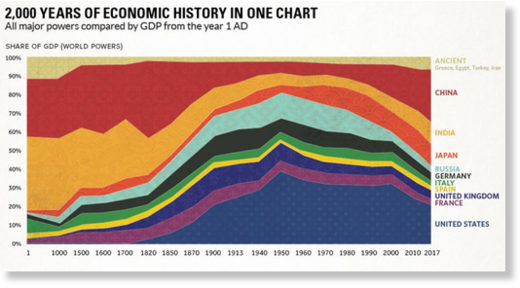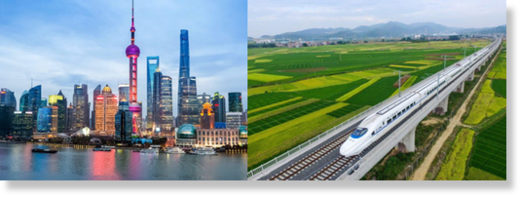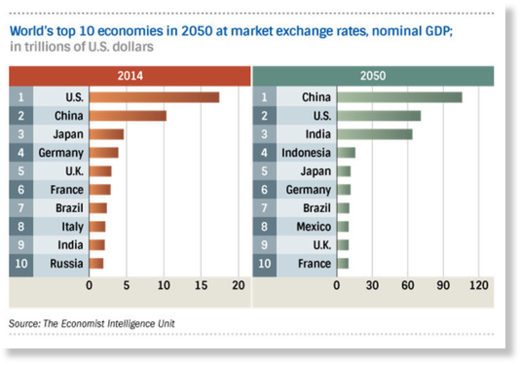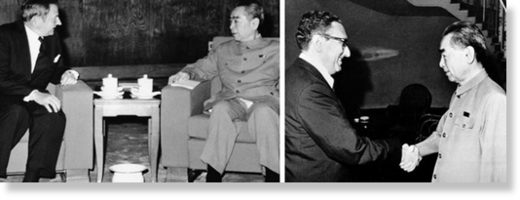Banking in Developing Countries
Saturday, April 01, 1995
Central Banks Have Caused Poor Monetary and Economic Performance
Mr. Schuler is an economist in Arlington, Virginia.
Twenty-five years ago, most of the world’s currencies were linked to the dollar by fixed or pegged exchange rates. (I will explain those terms later.) The system was known as the Bretton Woods system, named after the New Hampshire town where an international monetary conference establishing the system had been held in 1944. Although the dollar was far from perfect, it provided some discipline against inflation and thereby aided economic growth, especially for developing countries. From 1960 to 1970, average annual inflation in developing countries was 3-4 percent, about the same as in developed countries.[1] The rather spotty statistics of economic growth for developing countries indicate that growth per person was increasing roughly as fast as in developed countries.
The Bretton Woods system began to unravel in 1971 and collapsed completely by 1973. It unraveled because the U.S. government abandoned the policy of keeping the dollar convertible into gold at $35.00 per troy ounce. Over the years the Federal Reserve System, the U.S. central bank, created money too fast to be compatible with the government’s stock of gold at the existing exchange rate. Foreigners therefore converted dollars into gold at a rapid rate, which reduced the U.S. government’s stock of gold. Rather than replenish the stock of gold by having the Federal Reserve raise interest rates, the U.S. government decided to make the dollar a floating currency in terms of gold.
Other countries thought that they could do better by floating their currencies also, rather than maintaining pegged exchange rates with either the dollar or gold. At first it was mainly developed Western countries that floated their currencies. Over time, though, more and more developing countries also floated their currencies against the dollar.
After the collapse of the Bretton Woods system in the early 1970s, developing and developed countries alike experienced lower growth and higher inflation. From 1970 to 1980, average annual inflation was 9.1 percent in developed countries and 26.2 percent in developing countries. But since about 1980, developed countries have reduced inflation, while developing countries have not.
From 1980 to 1992 average inflation for developed countries fell to 4.3 percent a year, while for developing countries it accelerated to an astounding 75.7 percent. The result has been a slowdown in economic growth for developing countries. From 1980 to 1992, economic growth was 2.3 percent per person a year in developed countries, but only 0.9 percent in developing countries. The trend has continued since 1992. Only a few East and South Asian developing countries grew rapidly; many other developing countries actually had declining income per person.
Central Banks Responsible
The dramatic rise in inflation and fall in economic growth in many developing countries since 1971 has been caused by their central banks. Except in Latin America, few developing countries had central banks before the 1950s. Until then most developing countries were colonies of European countries, particularly Britain and France. The currencies of almost all developing countries were linked in one way or another to the dollar, pound sterling, or franc. The dollar, sterling, and franc all experienced difficulties before 1971, but even so they imposed a sort of quality control on the currencies of developing countries by means of exchange-rate links.
Before developing countries established central banks they had a variety of arrangements for maintaining exchange-rate links with the dollar, sterling, or franc. A few countries had free banking–competitive issue of banknotes by commercial banks–although government intervention ended that system before World War II in most places where it had existed. Other countries, including some French and Portuguese colonies, had monopoly issue of notes by a commercial bank that was granted the monopoly privilege by the government. Still other countries, mainly French colonies, had monetary institutes. A monetary institute is a government body that issues banknotes under fairly strict rules, such as a requirement that it have foreign reserves (bank deposits or high-quality bonds in a foreign currency) of 50 percent or more against its banknotes in circulation and other liabilities. Monetary institutes in French colonies were supervised by the French government, which kept a watchful eye on them because it did not want to pay for their mistakes.
Still other developing countries, mainly British colonies, had currency boards. A currency board is a monetary authority that issues banknotes and coins (and, in some cases, deposits) backed 100 percent by assets in a foreign “anchor” currency and fully convertible into the anchor currency at a fixed exchange rate and on demand. As reserves, a currency board holds low-risk, interest-earning bonds and other assets payable in the anchor currency, equal to 100 percent or slightly more of its bank notes and coins in circulation (and deposits, if any), as set by law.,
Although there. were differences in the ways that these monetary systems worked, they shared two important features. The first was that all provided relatively low inflation by means of stable exchange rates to their anchor currencies or to gold or silver. The second feature’ which was related to the first, was that all kept government away from the monetary printing press, through private ownership (in the case of free banking and monopoly issue of notes by a commercial bank) or strict rules governing monetary policy (in the case of the currency board and monetary institute systems).
The record of these pre-central banking monetary systems was very good. Devaluations happened occasionally except in currency board systems, but they were imposed by governments and were not the fault of commercial banks or monetary institutes. Most of the pre-central banking systems maintained full convertibility of their own currencies into their anchor currencies; that is, there were no restrictions on exchanging their currencies into the anchor currencies.
The record of central banks in developing countries was much worse even before the 1970s. During the Bretton Woods period (1946-1971), central banks in developing countries that had signed the Bretton Woods agreement carried out more than 150 devaluations. All but a few developing countries with central banks devalued against their anchor currency-typically the dollar-at least once during the period. And few had currencies that were fully convertible into their anchor currency; instead, they had extensive restrictions or outright prohibitions on exchanging their currency into any foreign currency.
Exchange-Rate Systems and Inflation
Developing countries have done much worse by having central banks than they would have done by continuing their previous monetary systems or by ceasing to issue their own currencies and using the dollar, sterling, or franc instead. The reasons have to do with the relation between exchange-rate systems and inflation.
There are three types of exchange-rate systems: fixed, pegged, and floating. In theory a developing country could have a high-quality currency under any of these systems, but in practice a fixed exchange rate is the only system with a consistent record of doing the job. Free banking, monopoly issue of notes by a commercial bank, the monetary institute system, and the currency board system were all systems of fixed exchange rates.
People often confuse fixed and pegged exchange rates. They are quite different, however, and have quite different effects. Both are maintained constant in terms Of an anchor currency (which can be gold), but the similarity ends there. A pegged exchange rate is maintained constant for the time being in terms of the anchor currency, but carries no credible long-term guarantee of remaining at its current rate. A fixed exchange rate is preferably established by law as permanent, or at most is alterable only in emergencies. A rough-and-ready classification is that a truly fixed exchange rate is altered no more than once every thirty years. (Thirty years is the longest period for which there are active bond and mortgage markets in many countries.) If the exchange rate is altered more than every thirty years it should be considered pegged.
Many people think the Bretton Woods system was one of fixed exchange rates. It was not; rather, it was a mixture of fixed and pegged rates. Few currencies in the Bretton Woods system floated: in 1970 the only ones were the Canadian dollar, South Korean won, and Lebanese pound. As I mentioned, most central banks in developing countries that had signed the Bretton Woods agreement devalued at least once during the Bretton Woods period. The record of central banks in developing countries was no better: most of them devalued at least twice during the period. In contrast, few of the pre-central banking systems (and no currency board systems) devalued during the Bretton Woods period.
Since the Bretton Woods system ended the pattern has continued. The collapse of the Bretton Woods system continued the weakening of barriers to inflation that began when developing countries established central banks. Of the more than 150 developing countries with central banks, the currencies of all but a dozen have depreciated against the dollar since 1970. Some of the depreciations have been huge: a Russian ruble is today worth about 1/4,000 its 1970 value in dollars, and the Brazilian currency, adjusted for all the zeros that have been chopped off it over the years, is worth less than one-billionth its 1970 value.
Central banks have performed so poorly in developing countries because pegged and floating exchange rates alike do not furnish enough of a barrier against political pressures for inflation. Pegged exchange rates have not worked well in developed countries or developing countries. They invite currency speculators to profit from a devaluation that is almost certain to occur eventually. The Bretton Woods system collapsed because the U.S. dollar was pegged rather than fixed to gold. The largest attempt to peg exchange rates since the Bretton Woods system is the Exchange Rate Mechanism of the European Monetary System, which links several West European currencies to the German mark, It has experienced great difficulties leading to successful speculative attacks on most of its currencies on several occasions, most recently in 1992 and 1993. Among developing countries, the devaluations of the CFA franc (the currency of 13 former French African colonies) and the Mexican peso in 1994 are recent examples of the difficulty of maintaining pegged exchange rates.
Floating exchange rates have a better record in developed countries. After the painful inflationary experience of the 1970s, developed countries found ways to keep inflation to levels not much higher than during the Bretton Woods period. Control of inflation in developed countries has been erratic, but it has been superb compared to developing countries. However, few developing countries have succeeded for long periods in combining low inflation and floating exchange rates. For example, the severe inflations that have occurred in many former Communist countries since 1989 have occurred mainly in floating exchange-rate systems.
All this experience suggests that the only way for most developing countries to have low inflation is to forget about pegged or floating exchange rates and to have a truly fixed exchange rate with a relatively stable anchor currency issued by a developed country, such as the dollar. And the only way to have a truly fixed exchange rate is to abolish central banks in developing countries and return to one or another of the pre-central banking systems.
The Ebb of Central Banking?
In the 1950s and 1960s a powerful combination of misplaced nationalism and interventionist economics convinced most developing countries that to assert their sovereignty and to fine-tune the economy they needed to replace their monetary institutes or currency boards with central banks. All but a handful of developing countries established central banks.
Recently the tide has began to turn. On the heels of an inflation exceeding 2,000 percent a year, Argentina stabilized its currency by means of a currency board-like system in April 1991. Estonia, which had suffered inflation exceeding 1,000 percent a year under the Soviet ruble, issued a new currency by means of a currency board-like system in June 1992. And after breaking free of the Soviet Union, experimenting with central banking, and suffering inflation exceeding 1,000 percent a year in 1992, Lithuania established a currency board-like system in April 1994. Argentina and Lithuania use the dollar as their anchor currency, while Estonia uses the German mark.
Like orthodox currency board systems, the Argentine, Estonian, and Lithuanian systems have 100 percent foreign reserves. Unlike orthodox currency board systems, though, they have had some restrictions on convertibility (now weak or removed) and the fixity of the exchange rate is not entirely secure because the monetary authorities are not well insulated from political pressure. Even so, since establishing currency board-like systems all three have had much lower inflation and have reversed the economic decline they were previously suffering. Their experience contrasts with the experience of other countries in their regions that have retained central banking. Estonia and Lithuania are enjoying economic growth while Russia, Ukraine, and most other former Soviet republics continue to have economic decline and inflation of hundreds of percent a year. Argentina has had four consecutive years of economic growth and has reduced inflation to mid-single digits, which is highly unusual for Latin America.
Other countries in Latin America and the former Soviet Union are now considering establishing currency boards or currency board-like systems. Monetary institutes are not experiencing a similar revival because their principles are not as simple and understandable as those of currency boards. Free banking has received attention from a growing number of economists, but has not yet convinced a broader political constituency.
Developing countries established central, banks with high hopes that have been unfulfilled. The best thing they can do to reverse their poor monetary and economic performance of recent years is to abolish their discretionary central banks and fix their currencies to foreign currencies with relatively good records of low inflation. The currency board system is a well understood and eminently practical way of doing so. Other alternatives to central banking are also worth considering. The important thing is to minimize, and preferably eliminate, discretionary government control in monetary policy.
1. Statistics of inflation and economic growth cited in the next few paragraphs are from World Bank, World Development Report, 1982, pp. 110-11, and 1994, pp, 162-63. Within groups, statistics are weighted by gross national product (GNP), so countries with large GNPs affect the group statistics more than countries with small GNPs
Timely stories and timeless principles, delivered daily to your inbox.
Sign up for the FEE Daily!

 0
0





